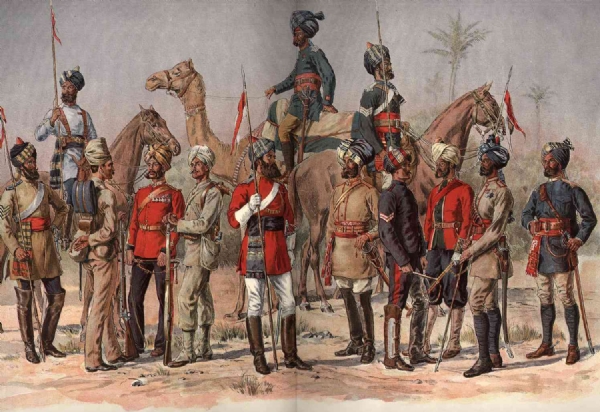The Armies of the Princely states in India
The combined strength of all these 98 States in the year 1896 was 55204 cavalry, 185729 infantry, and 4507 guns.
Total Views |
As Charles became the King of the United Kingdom, many in India remembered that there was such a thing as Kings in India not too distant in the past but just 75 years ago. The king traditionally remains one because of his Army. India under British rule had over 350 Princely states. Out of which 98 were allowed to keep their own armies.

The combined strength of all these 98 States in the year 1896 was 55204 cavalry, 185729 infantry, and 4507 guns. The strength of the British army upto 1885 was, the Queen's army, consisting of 63000 British soldiers and officers, the three sepoy armies of Bengal, Madras, and Bombay consisting of 125000 Indian soldiers (slightly earlier data from 1865 tells us the composition as 42 cavalry regiments, 142 infantry regiments, and 9 artillery batteries. This proportion most likely continued till 1885) and 900 Artillery exclusively under the control of British soldiers. This was more or less in accordance with the principles of military organization established by the Peel Commission of 1859 to prevent the recurrence of armed rebellion in India. Its main recommendations were that a permanent British force of 80,000 had to be stationed in India; the military ratio of Indian troops to European troops be fixed as two to one for Bengal and three to one for both Madras and Bombay; and that artillery should be mainly a European force.
This Strength of these armies was divided into three components of Infantry, Cavalry, and artillery. The Nizam’s Army was the largest one with over 24,000 infantry and over 6000 Cavalry. But it had just 35 guns in the artillery. Whereas the Udaipur army had over 19,000 infantry, over 5000 cavalry, and 464 artillery guns. These numbers might look staggering for an army of a princely state under the British Raj, but these were in fact puny numbers in the contemporary military strengths across the world. In 1871, during the Franco-Prussian War or the War of German Unification, the Prussian army had a standing army of 300,000 and double the number of reservists. It also had perhaps the most modern artillery gun of the time called Howitzers in large numbers. Of course, these numbers were of a sovereign European state, unlike the Indian princely states.
The armies of princely states were restricted severely after the 1857 rebellion. The rebellion of 1857 was scary for the British not just because of the rebel troops but for the fear of Rajput and Maratha Princes uniting to join the rebels, which did not happen. The princely states in India did not use their armies against the British during the 1857 rebellion, which could have possibly turned the battle against the British.
To find more details about the Princely states and their armies, please check out this link.


